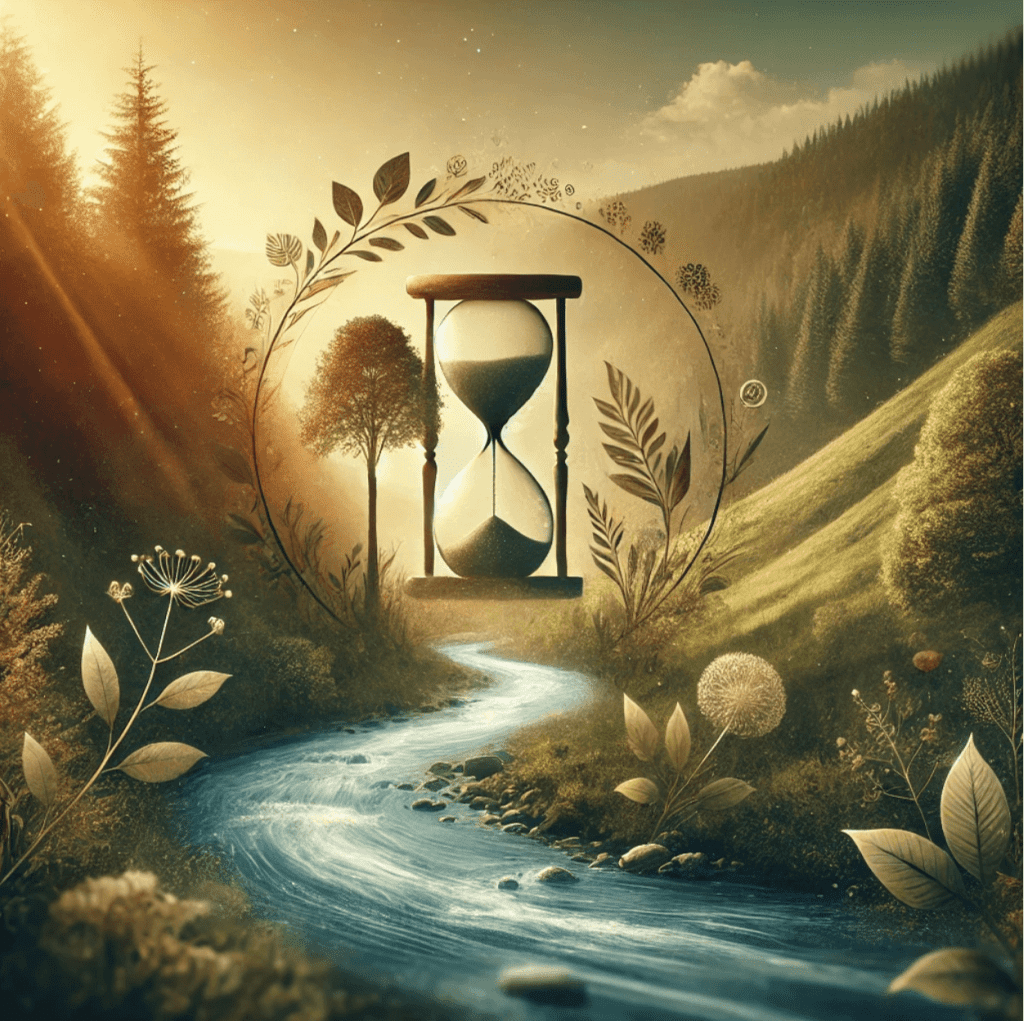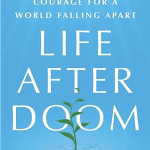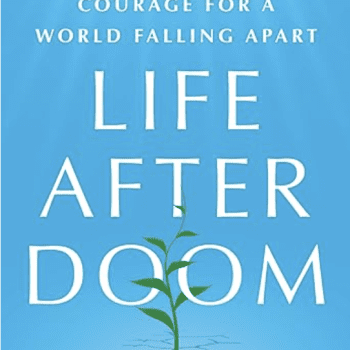
What do you feel led to do, to change, or let go of in this season of your life? As a guide for exploring that question, I want to share some insights from a recently published book titled Slow Productivity: The Lost Art of Accomplishment Without Burnout by Cal Newport. In addition to being a tenured professor of computer science at Georgetown University, he is also a bestselling author of numerous books for a popular audience at the intersection of technology, productivity, and culture. I’ve been a big fan of Newport’s work for many years, and this book is one that I have been reflecting on a lot in order to discern how I want to live into this new congregational year.
The Power of Productive Rest: John McPhee’s Story
Let’s start with a story. Come back with me almost six decades to the summer of 1966. John McPhee was already a successful journalist. He had spent seven years as an associate editor at Time magazine before being hired as a staff writer at The New Yorker, where he had already published five long-form articles. Despite these successes, he was having trouble with his latest article, which was his most ambitious to date. He was trying to weave together the geological, ecological, and political history of the New Jersey Pine Barrens, a place that may be most recognizable these days as the title of one of the most memorable episodes of The Sopranos (1). We don’t have time to go there, although I do have a sermon in me that I might one day preach, about the controversial final scene of that show.
Back to McPhee: he had already invested eight months in researching the Pine Barrens, but couldn’t figure out how to start writing. For nearly two weeks, he spent his so-called “working hours” lying on a picnic table “staring up into branches and leaves, fighting fear and panic.” How many of you have bosses that would be OK with you spending two weeks daydreaming while horizontal?
Here’s the thing though: after giving himself permission to let his mind wander for an extended period of downtime, he suddenly had the flash of insight he needed to weave together his vast pile of research (2). The result is “a marvel of long-form reporting and one of the more beloved entries in McPhee’s long bibliography.”
How many magazine articles are published each month? A lot. And how many are still remembered and celebrated decades later? Almost none. From the perspective of modern productivity culture, spending two weeks doing nothing is a huge waste of time. And many corporate managers have been taught that good work “requires increasing busyness — faster responses to emails and chats, more meetings, more tasks, more hours” (7). But quantity of hours worked doesn’t guarantee quality results.
The Myth of Constant Busyness
How many of you have seen the classic 90s satire, Office Space? In one of many incredible scenes from that film, the protagonist confesses, “Well, I generally come in at least fifteen minutes late. I use the side door — that way [my manager] can’t see me — and after that I just sorta space out for about an hour…. Yeah, I just stare at my desk; but it looks like I’m working. I do that for probably another hour after lunch, too. I’d say in a given week I probably only do about fifteen minutes of real, actual, work.”
In his book, Cal Newport criticizes the all-too-common focus upon appearing busy as “pseudo-productivity” — “(…the use of visible activity as the primary means of approximating actual productive results” (22). Instead of merely appearing to be busy in front of your boss, Newport is interested in how to incentivize actual results. And research shows that quality work often requires giving people the space and time needed to create at an innovative and impactful level.
Quality Over Quantity: The CBS Story
Here’s another story: in 1995, the television network CBS was struggling, and the head of entertainment noticed one Friday midafternoon that the offices were mostly empty. He stormed back to his office and fired off an angry memo: “Unless anybody hasn’t noticed, we’re in third place [in the ratings]. My guess is that at ABC and NBC they’re still working at 3:30pm on Friday. This will no longer be tolerated” (13). I understand his frustration, but as we are coming to see, forcing your employees to be present in the office for longer hours doesn’t guarantee success. What ended up saving CBS wasn’t forcing employees to clock out precisely at 5pm; it was a last-minute decision to air a little show you may have heard of called CSI, which ran for fifteen seasons and became the network’s “most successful series at the time with the highest ratings” (Wikipedia).
Similar to McPhee’s story, CSI was dreamed up through
the obsessive efforts of an eccentric creative [named Anthony Zuiker] who spent over three years nurturing a vision…. There were long stretches during the development of CSI in which Zuiker’s visible activity would have been minimal, balanced by other stretches that were more intense. But…who cares if he rested for a month in 1999, when he ultimately saved the network by 2000? (28-29)
The point is that working increased hours at a frenetic pace is not the recipe for success that people sometimes think it is.
The Slow Movement: Beyond Just Food
So, inspired by movements like
- Slow Food, which prefers unique traditional and regional cuisine over generic, cookie-cutter, fast food homogeneity. (31)
- Slow Medicine, which offers holistic care of the whole person over discrete parts
- Slow Schooling, which discourages high-stakes testing over rich learning environments, and
- Slow Media, which highlights high quality alternatives over digital clickbait (35)
Newport coined the term “slow work,” which he defined as:
A philosophy for organizing knowledge work efforts in a sustainable and meaningful manner, based on the following three principles:
- Do fewer things
- Work at a natural pace
- Obsess over quality. (8)
Let’s unpack each in turn.
Before I do so, let me acknowledge that many workers have far too little control over their working hours or assigned tasks. But these principles can also be applied to other perhaps more controllable areas of life — family commitments, hobbies, personal goals — to make life more “humane and sustainable” (41).
Newport’s first principle of slow work is “do fewer things.” Or, as a meme says it more colorfully:
Pick your battles.
Pick fewer battles than that.
Put some battles back.
That’s still too many battles.
For Newport, do fewer things means: “Strive to reduce your obligations to the point where you can easily imagine accomplishing them with time to spare. Leverage this reduced load to more fully embrace and advance the small number of projects that matter most” (53).
That’s easier said than done. Along these lines, I sometimes ask myself how I can become merely 80% busy instead of 120% busy? Steve Jobs said it this way: “Deciding what not to do is as important as deciding what to do” (176). How might your life benefit from doing fewer things so that you can bring your best self to the things that remain?
Here’s a related story: Jane Austen is renowned for an unbelievably impressive five-year run: she published Sense and Sensibility in 1811, Pride and Prejudice in 1813, Mansfield Park in 1814, and Emma in 1816 (47). In the wake of her tragically young death at the age of forty-one, a myth grew up around her that she wrote these masterpieces of modern literature by “writing secretly, scribbling prose in bursts between the many distracting obligations of her social standing” (48).
More likely, the reality was that, in 1809, two years before she published her first novel, her family moved away from the hubbub of the social scene to a remote area where they had much more privacy. In this new location, Austen’s only obligation was to fix breakfast for her family; otherwise, she was free to write. It turns out that “busy Jane Austen was neither happy nor producing memorable work, while unburdened Jane Austen, writing contentedly at [a] quiet cottage, transformed English literature” (53).
A similar myth grew up around J. R. R. Tolkien: that he dreamed up the mythologies of Middle-earth “while under fire in the hellish trenches of the World War I battalion to which he was stationed…. The reality is that Tolkien didn’t start writing the stories that would develop into his famed fantasies until he was convalescing in a British hospital, a circumstance not unlike Austen’s cottage in which he found himself suddenly granted expansive free time” (52).
Newport’s second principle is “Work at a natural pace,” which he understands to mean: “Don’t rush your most important work. Allow it instead to unfold along a sustainable timeline, with variations in intensity, in settings conducive to brilliance” (116).
As background, when Newport researched the lives of some of history’s paradigm-shifting scientists, he found:
Two [seemingly] contradictory observations…. Great scientists of times past were clearly ‘productive’ by any reasonable definition of the term. At the same time, the pace at which they toiled their momentous discoveries seem, by modern standards, to be uneven, and in some cases almost leisurely. (111)
Copernicus, for instance, had his first monumental insight that we live not in a geocentric universe, but in a heliocentric solar system, in 1496. But he didn’t write down his theory until 1510, a decade and a half later. Three decades would pass until 1543, when he published his findings in On the Revolutions of the Celestial Spheres. Similarly, “Isaac Newton began thinking seriously about gravity in 1655…but it took him [another fifteen years] until 1670 before he felt he really had a handle on the inverse square law, and then another fifteen years before he finally published his theories” (112).
Here’s a more contemporary example. There is a myth that Jack Kerouac wrote On the Road in three weeks.
The truth is that he typed an initial draft of the manuscript in that amount of time. His full effort…stretched out [over three years]…. Then he spent another six years completing six additional different drafts, trying to find a form that he could persuade a publisher to accept.” (153)
The modern pressure to relentlessly grind out more and more work as if we were machines instead of human beings is often counterproductive to being creative at the highest levels (115). Some of you may remember my sermon from a few years ago inspired by the profound and subversive book, Rest Is Resistance. Here’s one quote from the author (who calls herself the Nap Bishop): “Grind culture wants us to keep going no matter what. I sit my [butt] down and daydream. The answer is NO” (Twitter).
Practical Steps Toward Slower Productivity
Newport suggests three practices for carving out more time and space in your life. These examples may not work for everyone, but they can inspire related variations. Idea #1: you may have heard of No Meat Mondays. Well, how about No Meeting Mondays? You could choose a different day if that would work better for your schedule. The point is that one day a week is only 20% of your available time; so, you may find that you can introduce this change without giving the impression that you are unreasonably unavailable (147). The result could be a larger swath of weekly uninterrupted time for deep work.
Idea #2: See a matinee once/month (148). I appreciate that Newport sets this bar monthly, not weekly. It’s OK if films aren’t your jam. You can pick something different. The point is: could you sneak away even once a month for a few hours to do something special that would be restorative to you?
Idea #3: schedule rest projects (149). We’ve all become accustomed to adding additional items to our “to do” list. But what if we got better at blocking off time to rest, especially in the wake of particularly busy periods?
Newport’s third principle of slow work is “Obsess over quality,” which he understands to mean: “Obsess over the quality of what you produce, even if this means missing opportunities in the short term. Leverage the value of these results to gain more and more freedom in your effort over the long term” (173).
Here’s a story of what that can look like. In 1995, the singer-songwriter named Jewel was living out of her car and trying to make it as a recording artist. When a record label offered her a million-dollar signing bonus, shockingly, she turned it down (169). She knew that so-called “bonuses” were really loans against future record sales, and she reasoned that, “If she didn’t cost the label much money, they would be less likely to drop her if she wasn’t an immediate hit.” That bought her the time and space she needed to hone her craft — to “obsess over quality” in Newport’s words (170-171).
Despite the temptation to take the million dollars and start spending, “Jewel kept her expenses low. Instead of having a tour bus and tour manager, she traveled cheap in a rental car and performed without a band.” She would even play for high schools during the day in exchange for free transportation (171).
With more experience performing, she was able to fully find her voice: her music became looser and more soulful. And when she released a sultry video for “You Were Meant for Me” in her newfound style, her sales rocketed: “The album went from selling a few thousand copies over its first year to a million copies each month” — eventually hitting a total of twelve million copies sold (172).
Finding Your Own Path to Slow Productivity
There’s a lot more to say about slow work, but as I move toward my conclusion, I invite you to consider whether there are ways you feel led to experiment with slow productivity in this season of your life? Are there any ways that you can free yourself or others around you from pseudo-productivity (216)? And are there any ways your life might benefit from doing fewer things, working at a more natural pace, or obsessing over quality?
This shift isn’t about not working hard; it’s about your focus and your deep work on projects that really matter (217).
Quite a few of you, for instance, have shared with me that this fall you have intentionally let go of one or more of your usual responsibilities to focus on UU the Vote or similar electoral justice efforts. The election is only 57 days away, and the number one cure for electoral anxiety is taking action to get out the vote.
For now, I’ll end with a quote from Newport’s book:
Slow productivity, more than anything else, is a plea to step back from the frenzied activity of the daily grind…. Exhausted scrambling is often orthogonal to the activities that matter…. If you collect modest drops of meaningful effort for 365 days, you’ll end the year with a bucket that’s pretty full. This is what ultimately matters: where you end up…not the number of people you impress with your jittery busyness along the way…. We’ve tried the fast approach…. The time has come to try something slower.













